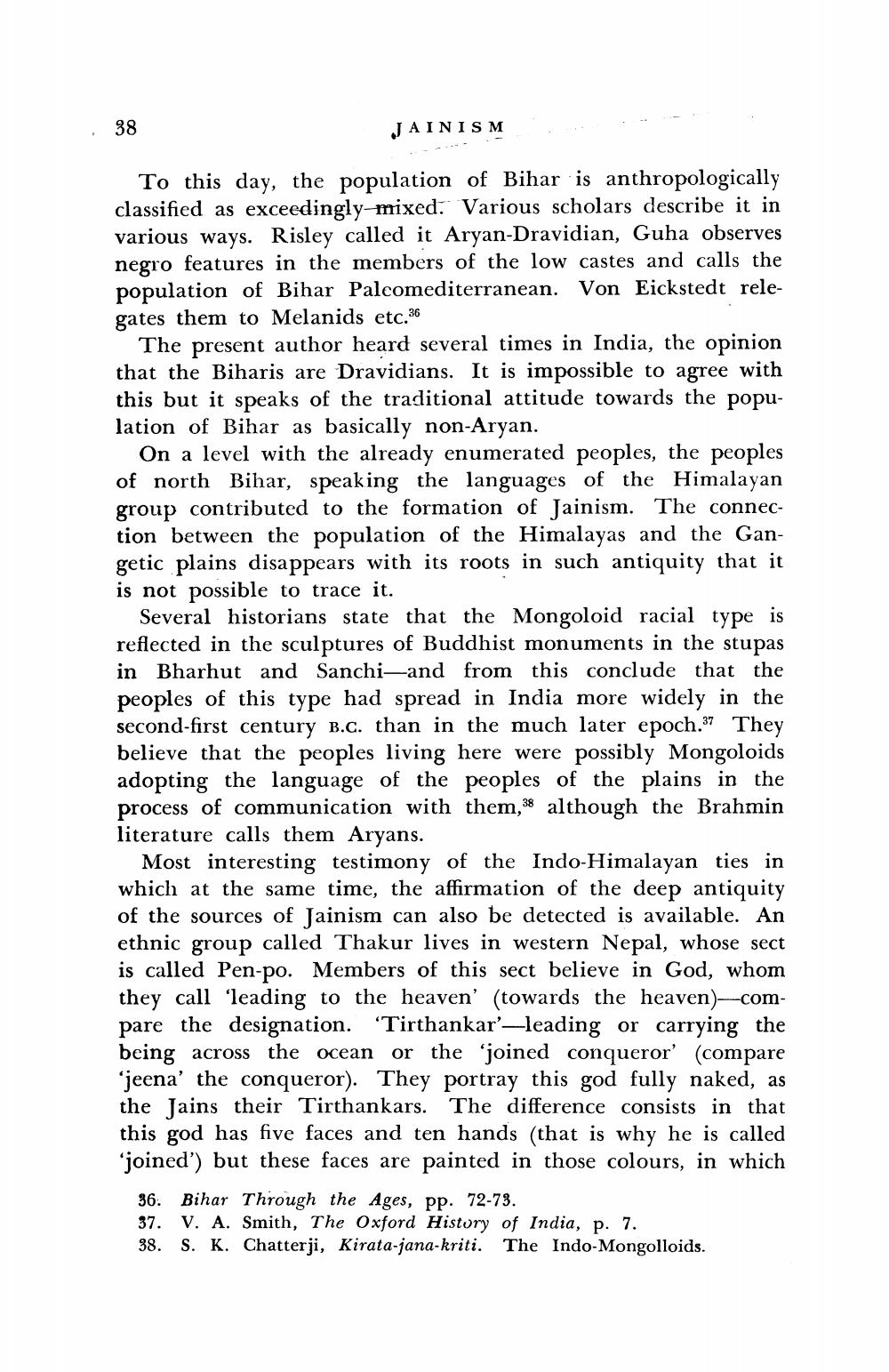________________
38
JAINISM
To this day, the population of Bihar is anthropologically classified as exceedingly-mixed. Various scholars describe it in various ways. Risley called it Aryan-Dravidian, Guha observes negro features in the members of the low castes and calls the population of Bihar Palcomediterranean. Von Eickstedt relegates them to Melanids etc.36
The present author heard several times in India, the opinion that the Biharis are Dravidians. It is impossible to agree with this but it speaks of the traditional attitude towards the population of Bihar as basically non-Aryan.
On a level with the already enumerated peoples, the peoples of north Bihar, speaking the languages of the Himalayan group contributed to the formation of Jainism. The connection between the population of the Himalayas and the Gangetic plains disappears with its roots in such antiquity that it is not possible to trace it.
Several historians state that the Mongoloid racial type is reflected in the sculptures of Buddhist monuments in the stupas in Bharhut and Sanchi-and from this conclude that the peoples of this type had spread in India more widely in the second-first century B.C. than in the much later epoch.37 They believe that the peoples living here were possibly Mongoloids adopting the language of the peoples of the plains in the process of communication with them,38 although the Brahmin literature calls them Aryans.
Most interesting testimony of the Indo-Himalayan ties in which at the same time, the affirmation of the deep antiquity of the sources of Jainism can also be detected is available. An ethnic group called Thakur lives in western Nepal, whose sect is called Pen-po. Members of this sect believe in God, whom they call 'leading to the heaven' (towards the heaven)-compare the designation. 'Tirthankar'-leading or carrying the being across the ocean or the 'joined conqueror' (compare 'jeena' the conqueror). They portray this god fully naked, as the Jains their Tirthankars. The difference consists in that this god has five faces and ten hands (that is why he is called 'joined') but these faces are painted in those colours, in which
36.
Bihar Through the Ages, pp. 72-73.
37. V. A. Smith, The Oxford History of India, p. 7.
38. S. K. Chatterji, Kirata-jana-kriti. The Indo-Mongolloids.




